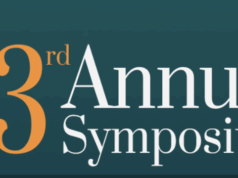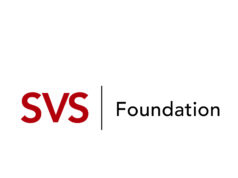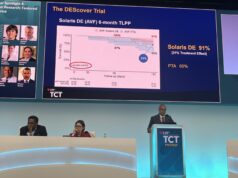“In a follow-up to Peter Lawrence’s Presidential Address last year about appropriateness of care, I have selected the topic ‘In Search of Clarity – SFA-Popliteal Interventions for Claudication,’” said Dr. Ronald Fairman, in his introduction to the 2016 Crawford Critical Issues Forum.
Each year, the Vascular Annual Meeting is highlighted by the Forum, which is moderated and organized by the incoming SVS president. This year, Dr. Fairman, of the University of Pennsylvania Health System, Philadelphia, assembled six speakers from a variety of disciplines to address the treatment of claudication as an area of concern for vascular specialists in an era of changing interventional technology and medical therapies.

©Martin Allred
Dr. Ronald Fairman
Dr. Mary McDermott, of Northwestern University, Chicago, discussed the growing area of exercise training for claudication. She pointed out that numerous studies have demonstrated the value of supervised treadmill exercise, but more recent research is focusing on a more achievable goal of home exercise walking coupled to behavioral counseling and monitoring as an effective method of treatment.
The medical management of claudication was addressed by Dr. Elizabeth Ratchford, of Johns Hopkins University, Baltimore. She pointed out that medical management focuses on the two aspects: Live Longer and Feel Better, with the current focus on the former due primarily to the lack of drugs that can affect the latter.
Dr. Michael S. Conte, of the University of California San Francisco, detailed the variety of interventions available, and addressed current guidelines and best practices. “Vascular surgeons are now the predominant specialty doing peripheral interventions,” said Dr. Conte. “Our guidelines suggest that firstline therapy should be exercise, either supervised or home-based. But importantly, we were the first to suggest that maybe there should be some threshold, such that patients should have a reasonable chance of at least 50% improvement that lasts for at least two years,” for any intervention.
Dr. Peter Schneider, Kaiser Permanente Medical Group, Honolulu, provided the example of the Kaiser Model for using technology. He pointed out that having to make a strong case for using a new technology before it was implemented was a good check on the introduction of new methods into practice.
How to make decisions on treatment in community practice was addressed by Dr. Dennis Gable, of Texas Vascular Associates, Dallas. After detailing the various issues involved, he concluded that there was no great difference between the treatment concerns of private and academic practice, other than the greater opportunity to participate in clinical trials that academia provides.
And finally, Robert M. Zwolak, MD, PhD, Dartmouth-Hitchcock Medical Center, Lebanon, dealt with the always thorny issue of the financial side of treating claudication. He pointed out that the difference between reimbursement to hospitals as compared with office-based practice is complex and can go either way depending on the type of treatment, he pointed out. “Supervised exercise is effective for claudication, but it is not covered by Medicare; percutaneous lower extremity intervention is expensive, but is covered by Medicare,” he said, pointing out the complexity of the issue.












